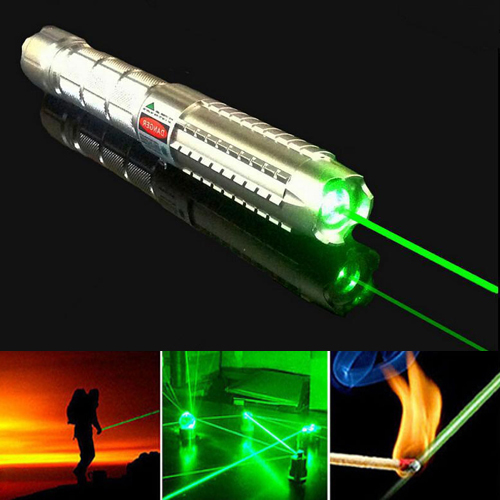Laser pointers, also known as laser pointer, pointers, etc., are pen-shaped transmitters designed to be portable, easy to hold, and processed into laser modules (light-emitting diodes) with visible lasers. Common laser pointers include red light (λ=650~660nm, 635nm), green light (λ=515-520nm, 532nm), blue light (λ=445~450nm) and blue-violet light (λ=405nm).
Because there is a laser diode that generates this wavelength, its structure is the simplest, basically just a diode with a battery as the energy source. The red laser pointer first appeared in the 1980s and is a large and heavy device worth hundreds of dollars; it is very small and very cheap. In recent years, a diode-pumped solid-state laser (DPSS) red laser pointer with a wavelength of 671 nm has appeared. Although this wavelength can be obtained with inexpensive diodes, DPSS technology can produce lasers with higher quality and narrower frequency bands.

Yellow light
A yellow laser pointer with a wavelength of 593.5nm appeared on the market. Based on DPSS technology, two lasers with wavelengths of 1064nm and 1342nm are added through a nonlinear crystal. The complexity of the process makes the yellow laser pointer unstable and low efficiency. The output power is 1-10mW with temperature changes. If it is overheated or overcooled, there will be a mode jump. This is because the size of the laser pointer does not provide the required temperature stabilization and cooling components. In addition, most 593.5nm laser pointers work in pulse mode in order to use pump diodes with smaller size and power.
Green light
Use the wavelength 808nm infrared laser to excite the nonlinear crystal, produce 1064nm infrared light, and then generate 532nm green light after frequency multiplication, which is a solid laser. Some green lasers work in pulsed or quasi-continuous mode to reduce cooling problems and extend battery life. The announced green laser pointer, which does not require frequency doubling, has higher efficiency.
Even low-power green light can be seen at night due to the Rayleigh scattering of atmospheric molecules. This laser pointer is often used by astronomy enthusiasts to point stars and constellations. The green laser pointer can have a variety of output powers. 5mW is the safest to use and can be seen under darker lighting, so no stronger power is needed for pointing purposes.
Blu-ray
Originally, only the 473nm blue laser produced by DPSS, the power is low and unstable. As CASIO developed a hybrid light source high-brightness projector containing a blue laser diode (445nm), blue semiconductor diodes with a power exceeding 1000mW (Type 4) were mass-produced and popularized.
Purple light
It uses a blue-violet laser diode with a wavelength of 405nm, which is a semiconductor laser, which is close to the ultraviolet band and has low visibility, but it can excite fluorescence, and has the function of currency check and chemical inspection.
